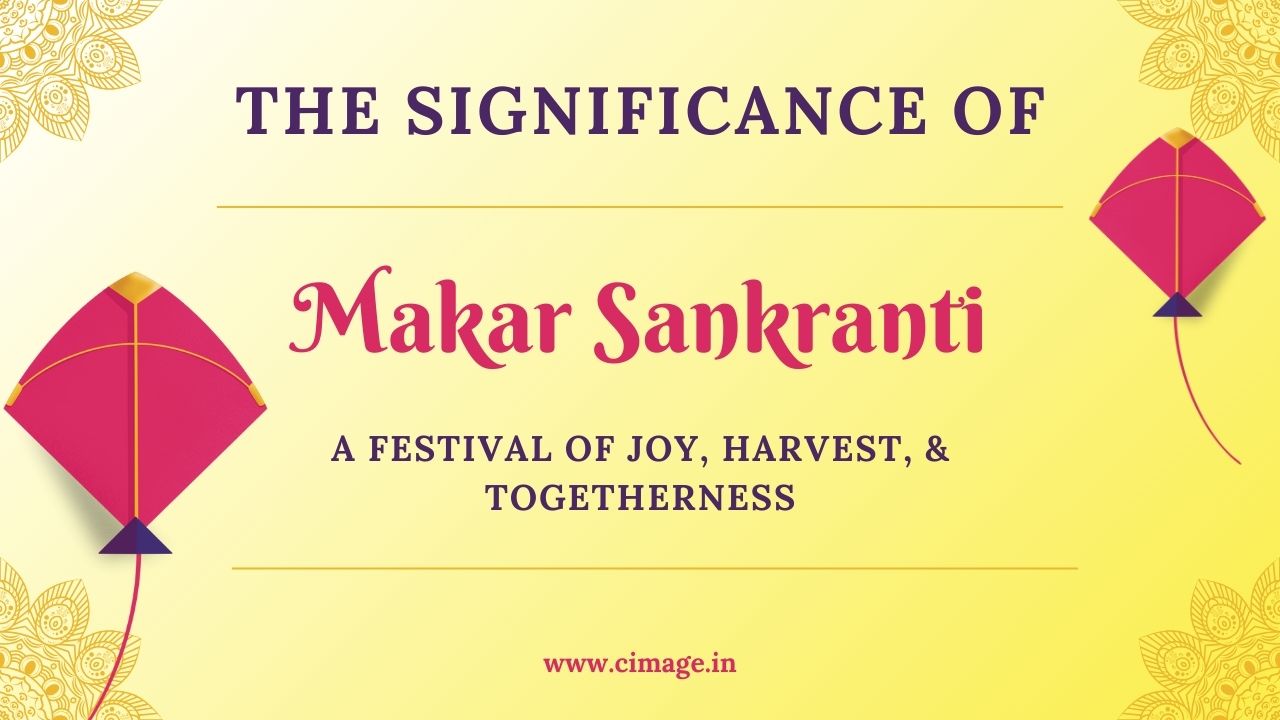
The Significance of Makar Sankranti in India: A Festival of Joy, Harvest, and Togetherness
Makar Sankranti is one of the most significant festivals in India, celebrated with great enthusiasm across the country. Observed annually on January 14th or 15th, depending on the solar calendar, this festival marks the transition of the Sun into the zodiac sign Capricorn (Makara). It is a celebration of the end of the winter solstice and the beginning of longer days. Makar Sankranti is a unique blend of cultural, religious, and social customs, reflecting India's diverse heritage.
The Cultural and Religious Significance
Makar Sankranti is deeply rooted in Indian culture and traditions. It is a festival that celebrates the harvest season, expressing gratitude to the Sun God and nature for a bountiful yield. In Hindu mythology, the day is considered auspicious as it signifies the Sun’s northward journey (Uttarayan). This shift is symbolic of enlightenment, prosperity, and positive change.
People perform rituals, offer prayers, and take holy dips in sacred rivers such as the Ganges, Yamuna, Godavari, and Krishna. These rituals are believed to cleanse one’s sins and bring good fortune. Pilgrimage sites like Prayagraj, Haridwar, and Varanasi witness large gatherings during this time.
Regional Names and Celebrations
Makar Sankranti is celebrated under various names and with unique traditions across India:
- Pongal (Tamil Nadu): A four-day festival where people prepare Pongal, a sweet dish made of rice, milk, and jaggery, and offer it to the Sun God.
- Lohri (Punjab): Celebrated with bonfires, dancing, and singing, Lohri marks the harvest of sugarcane.
- Uttarayan (Gujarat): Known for its grand kite-flying festivities, Uttarayan is a visual treat with colorful kites dotting the sky.
- Magh Bihu (Assam): Feasts, bonfires, and community celebrations are highlights of this festival.
- Suggi (Karnataka) and Sankranthi (Andhra Pradesh and Telangana): Farmers celebrate the harvest with special dishes and folk performances.
Kite Flying: A Vibrant Tradition
One of the most thrilling and colorful aspects of Makar Sankranti is kite flying, especially in states like Gujarat, Rajasthan, and Maharashtra. The skies are filled with vibrant kites of all shapes and sizes, symbolizing freedom and joy. The activity fosters a sense of community as people of all ages gather on rooftops to compete in friendly kite battles.
In Gujarat, the festival of Uttarayan is synonymous with kite flying, with international kite festivals held in cities like Ahmedabad. Competitors from across the globe participate, making it a unique cultural event.
Kite flying is not merely a pastime but also holds a symbolic meaning. It signifies reaching greater heights and aiming for success while celebrating the bounty of nature.
Traditional Foods of Makar Sankranti
Food plays an integral role in the celebration of Makar Sankranti, with each region boasting its special delicacies. Here are some of the must-have foods during the festival:
1. Til (Sesame) and Jaggery Sweets:
Tilgul Laddoos (Maharashtra): These sesame and jaggery-based sweets symbolize warmth and togetherness.
Chikki (Various states): A crunchy brittle made from jaggery and sesame seeds or peanuts.
2. Pongal (Tamil Nadu):
A sweet rice dish cooked with jaggery, milk, and dry fruits, offered to deities during the festival.
3. Pithe and Payesh (West Bengal):
Rice flour dumplings stuffed with coconut and jaggery, often served with a creamy rice pudding.
4. Lohri Specialties (Punjab):
Foods like sarson da saag and makki di roti, along with jaggery and rewari, are central to the celebrations.
5. Bajra Khichdi (Rajasthan):
A wholesome dish made from pearl millet and lentils, seasoned with spices.
6. Dahi-Chura (Bihar and Uttar Pradesh):
Flattened rice mixed with curd and jaggery, a simple yet delicious dish enjoyed during Makar Sankranti.
7. Puran Poli (Maharashtra):
A sweet flatbread stuffed with jaggery and lentils, often served with ghee.
These foods are not only delicious but also provide the body with much-needed warmth and energy during the winter season. The use of sesame seeds and jaggery is significant, as they are considered auspicious and are known for their health benefits.
Unity in Diversity
The beauty of Makar Sankranti lies in its diverse celebrations, each adding a unique flavor to the festival. Despite regional differences, the underlying theme remains the same: gratitude, renewal, and joy. Most of the School and Colleges are celebrating this festival.
In urban areas, people organize community feasts, cultural programs, and kite-flying competitions. Social media platforms are flooded with festive wishes and images of colorful skies, showcasing the unity in diversity that India is known for.
Makar Sankranti and Its Modern Relevance
While rooted in tradition, Makar Sankranti has adapted to modern times. Today, the festival also serves as an opportunity for family reunions and bonding. As people come together to celebrate, it strengthens the sense of community and fosters goodwill.
Moreover, the focus on sustainability is becoming a part of the celebrations. Eco-friendly kites and biodegradable materials are gaining popularity, reflecting a growing awareness of environmental responsibility.
Conclusion
Makar Sankranti is more than just a festival; it is a celebration of life, nature, and harmony. It reminds us to express gratitude for the blessings we receive and to embrace the positive changes that come our way. Whether it is flying kites, indulging in traditional delicacies, or performing rituals, the festival is a joyous occasion that brings people together in the spirit of love and unity.
As you celebrate Makar Sankranti this year, take a moment to appreciate the cultural richness and traditions that make this festival so special. Share sweets, fly kites, and spread happiness, for Makar Sankranti is a time to celebrate the beauty of togetherness and the promise of new beginnings.














